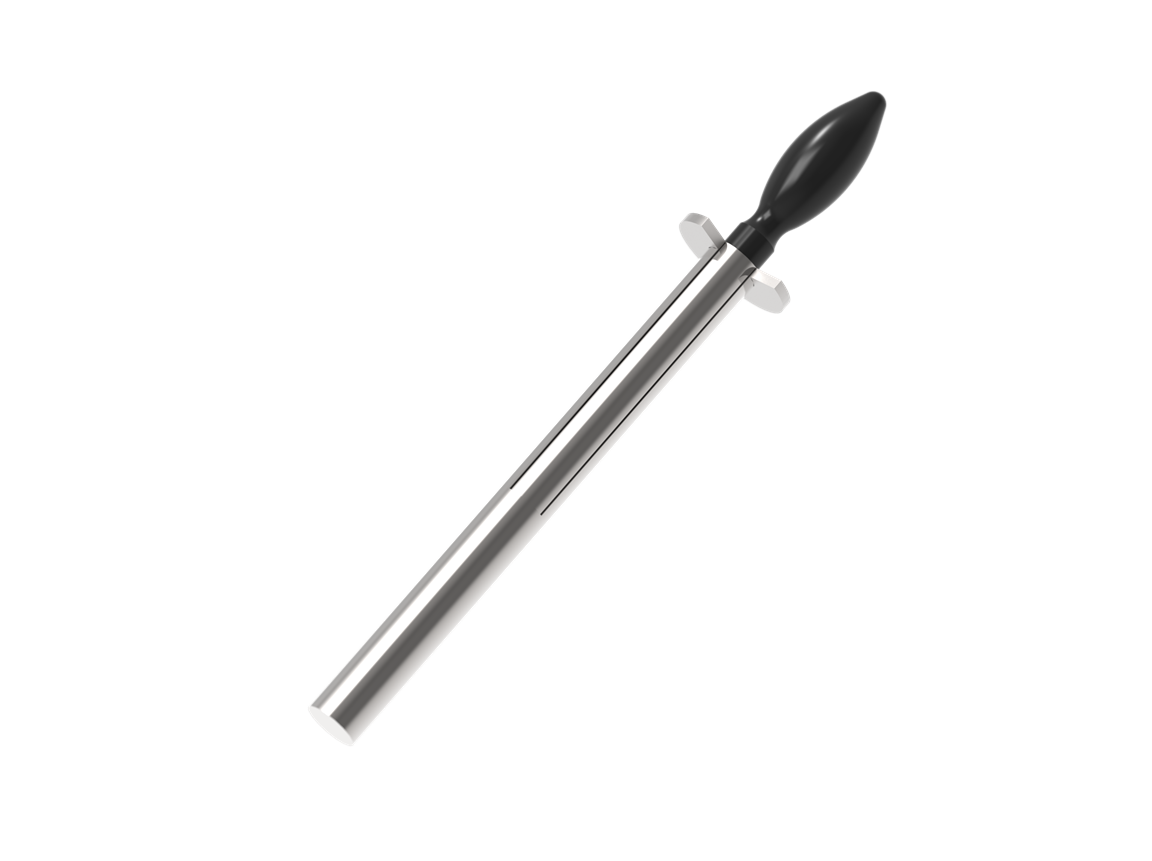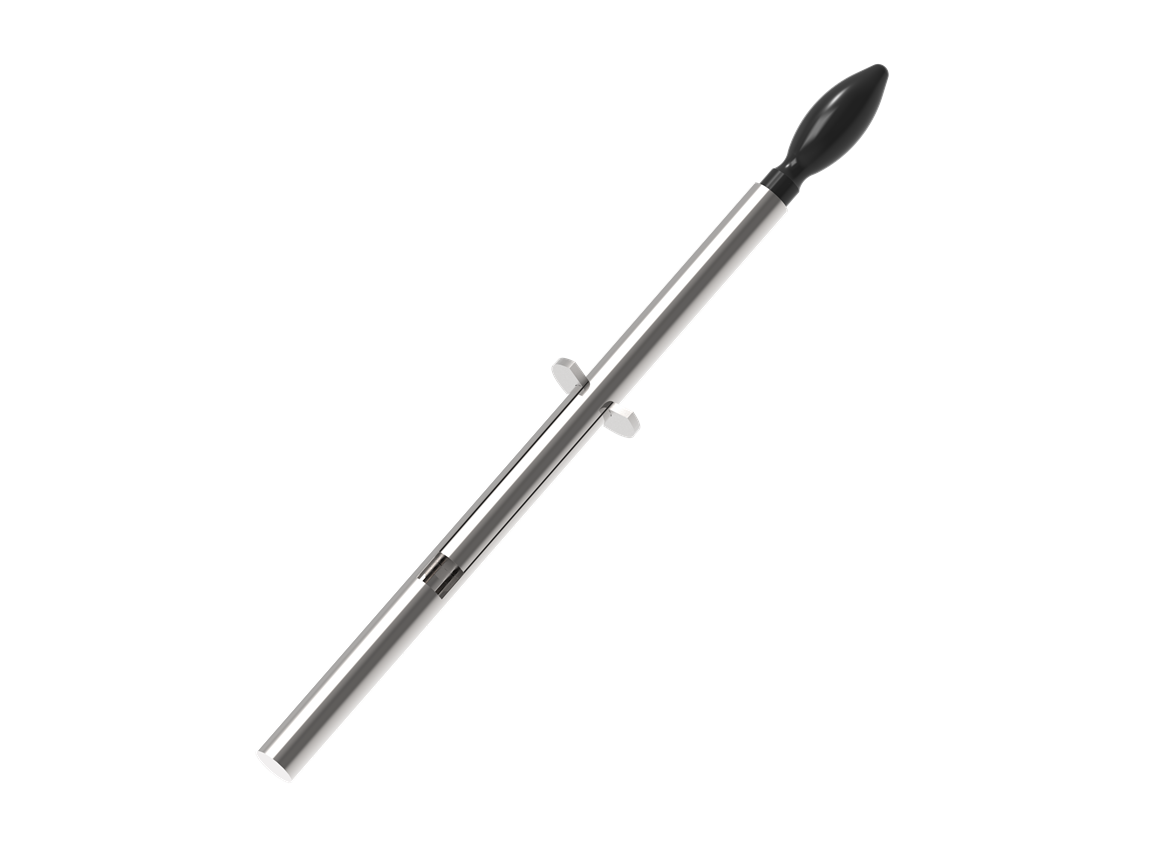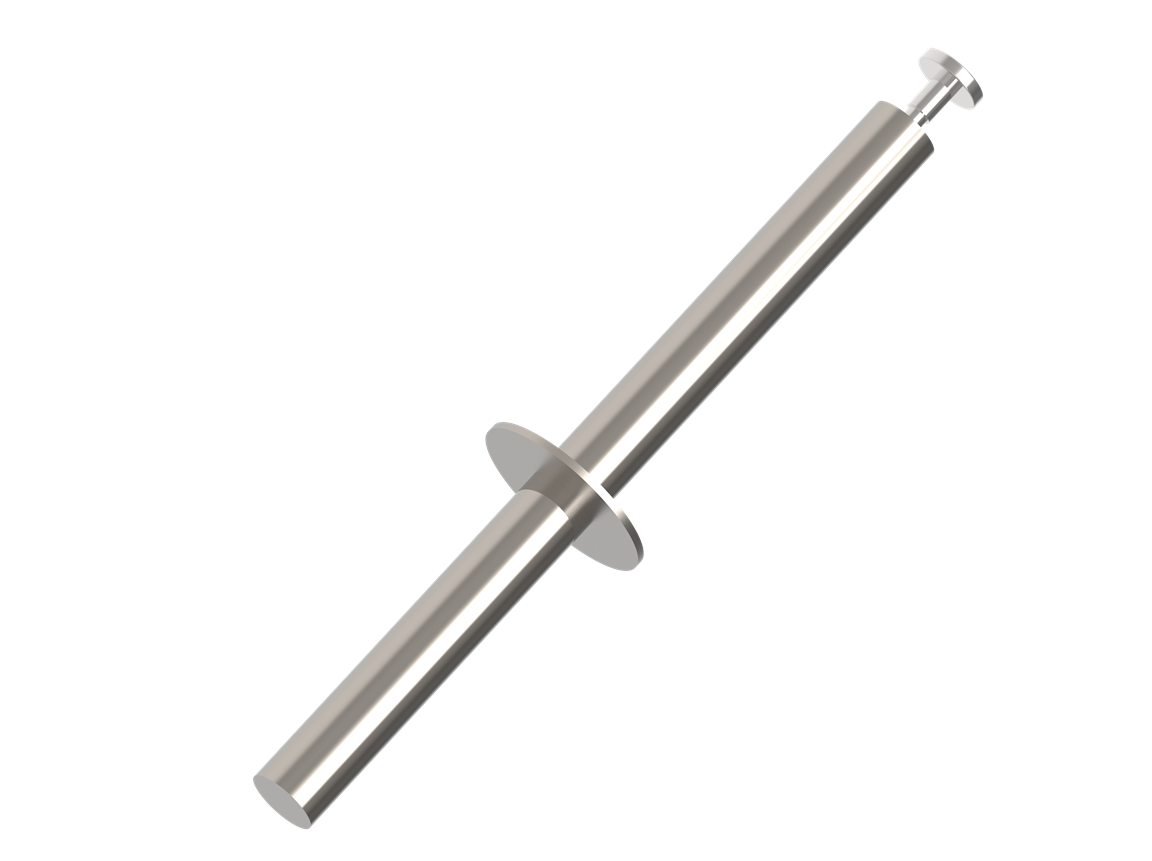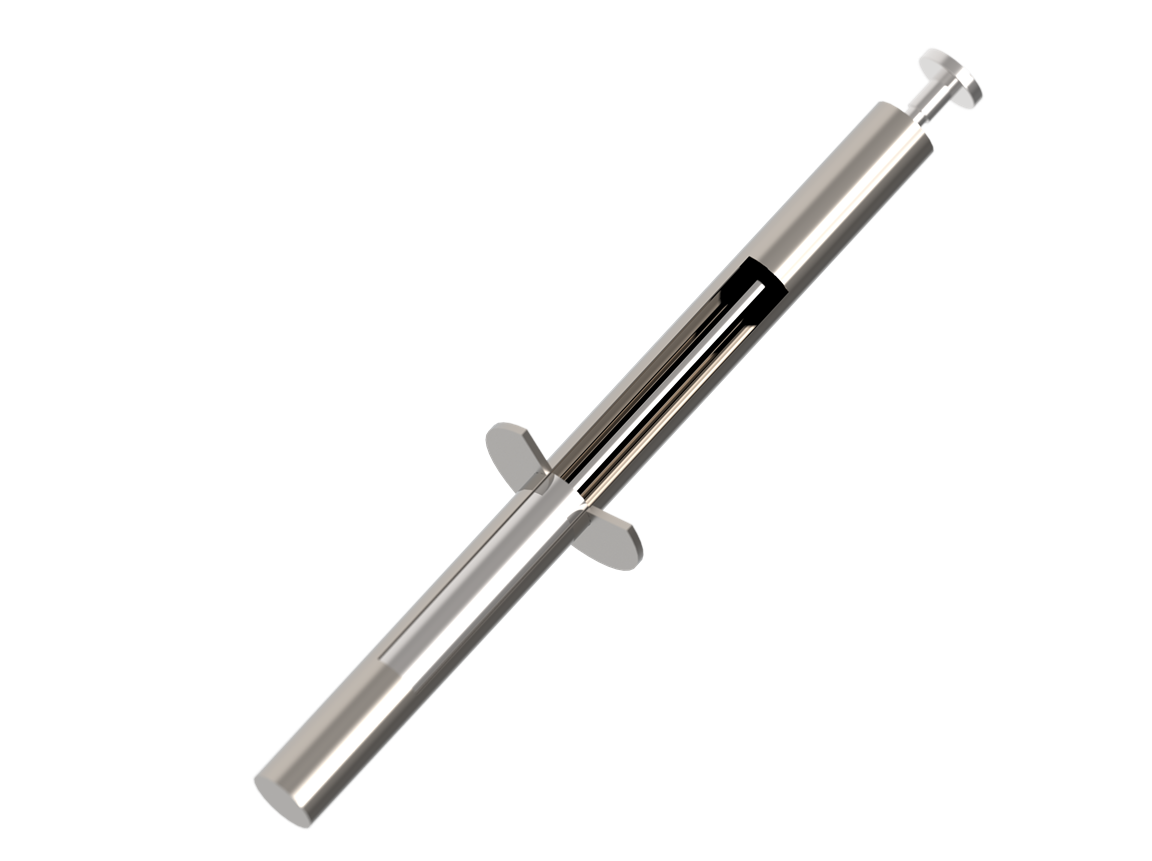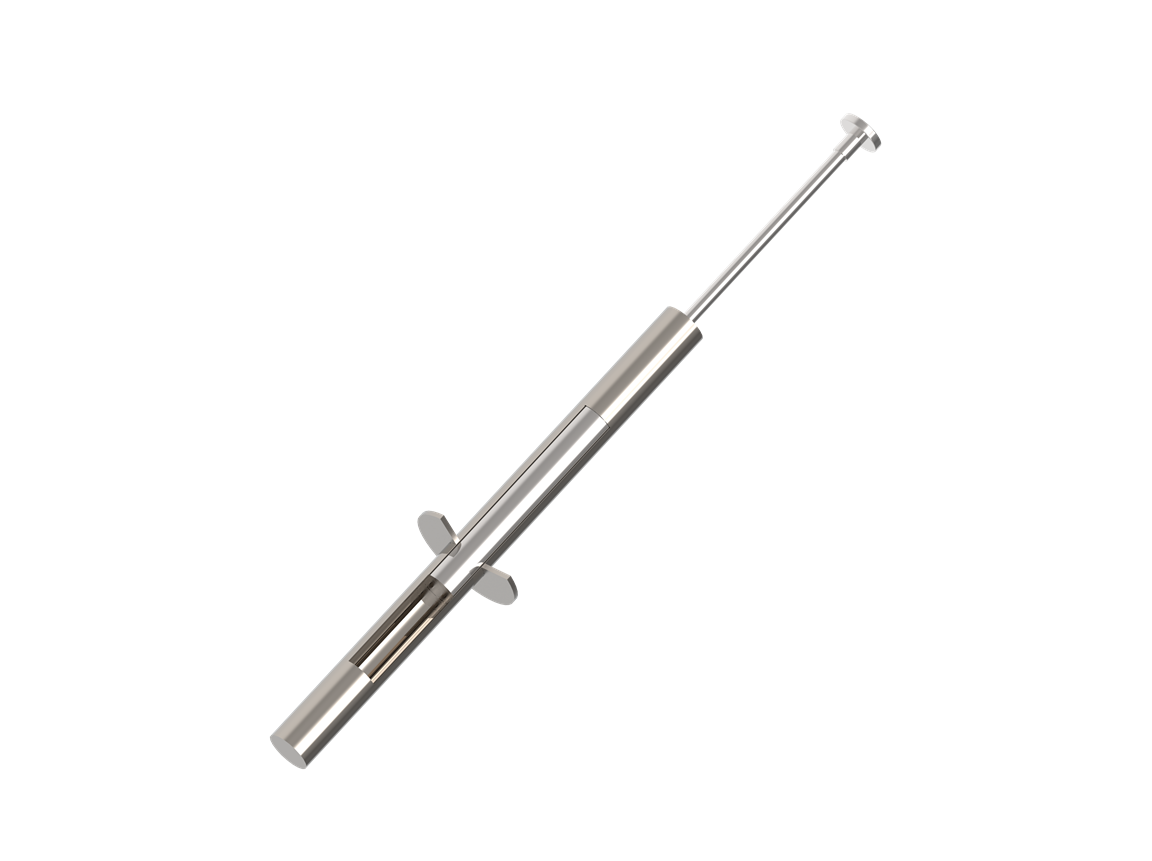Magnetic rod
Magnetic rods are used to filter out fine magnetic particles from liquids or powders.
Using practical, high-quality neodymium-iron-boron magnets enables particularly high field strengths to be obtained on the surface of the rod. A high field strength on the surface, combined with a high field strength gradient, produces particularly large force effects on magnetisable particles.
This means that the higher the flux density the more efficient the separation, so that significantly smaller particles and greater numbers of particles are separated.
Schematic sketch of NdFeB magnetic rod
- End piece screwed onto the magnetic rod - better mechanical stability
- Magnets are precisely aligned with and screwed onto the iron plate outside the pipe in a device - low wear of the rustproof pipe during stripping
- Use of high-quality, highly coercive NdFeB magnetic material
- Maximum flux density of 13.0 kG on the surface of the rod (flux density on the effective surface)
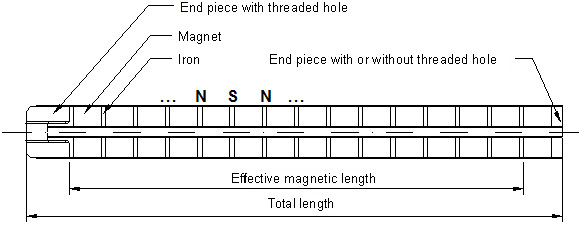
Finite Element Method (FEM)
The magnetic dimensions are determined and the effective range is tailored to the relevant requirements using the Finite Element Method.
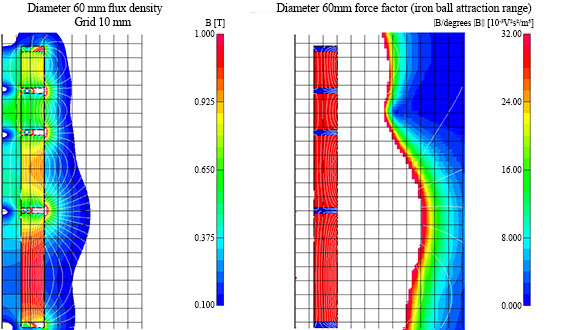
Permanent magnets in practical use
Increasing demands for the cleanliness of food products, raw materials and operating equipment, as well as a desire for machines to have a longer service life, are motivating more and more producers to improve their manufacturing processes. In particular the amount of the finest foreign iron particles (from abrasion, introduced by raw materials, etc.) in many areas is still underestimated.
One cost-effective way of counteracting this problem is to use high-power permanent magnets. When selecting the devices, the customer’s requirements and operating conditions are taken into account.
The high-power magnets used and the method of construction ensure that particularly high surface flux densities of up to 1.3 Tesla (13,000 Gauss) are achieved, and foreign iron particles of 5 µm and larger are separated out of liquid products and of 25 µm and larger out of powder products.
The surface flux density is not to be confused with the residual magnetism of the magnetic material used, known as the Br value, but represents the actual measurable size on the surface of the magnetic rod.
The careful choice of materials guarantees the durability of the magnets. No decrease in the surface flux density (demagnetisation) is possible under the specified operating conditions.
In contrast to the standard metal detectors available on the market, only foreign iron particles are removed from the product flow with these high-power magnets, saving the usual extraction. Practical experience has shown that approximately 80-90% of foreign particles are magnetisable, hence they can be removed from the product flow with magnetic filters.
The use of high-power magnets allows ATEX requirements to be fulfilled in explosion-protected plant areas by minimising particles that trigger sparks.


